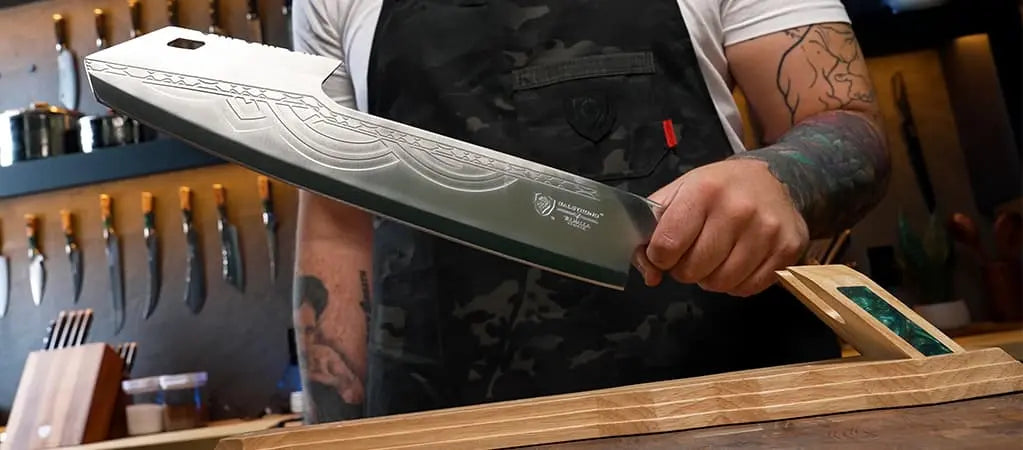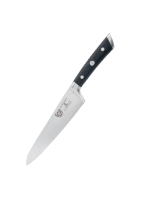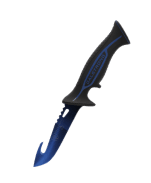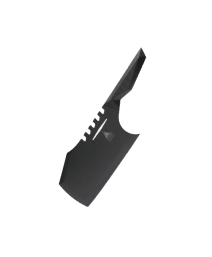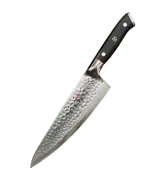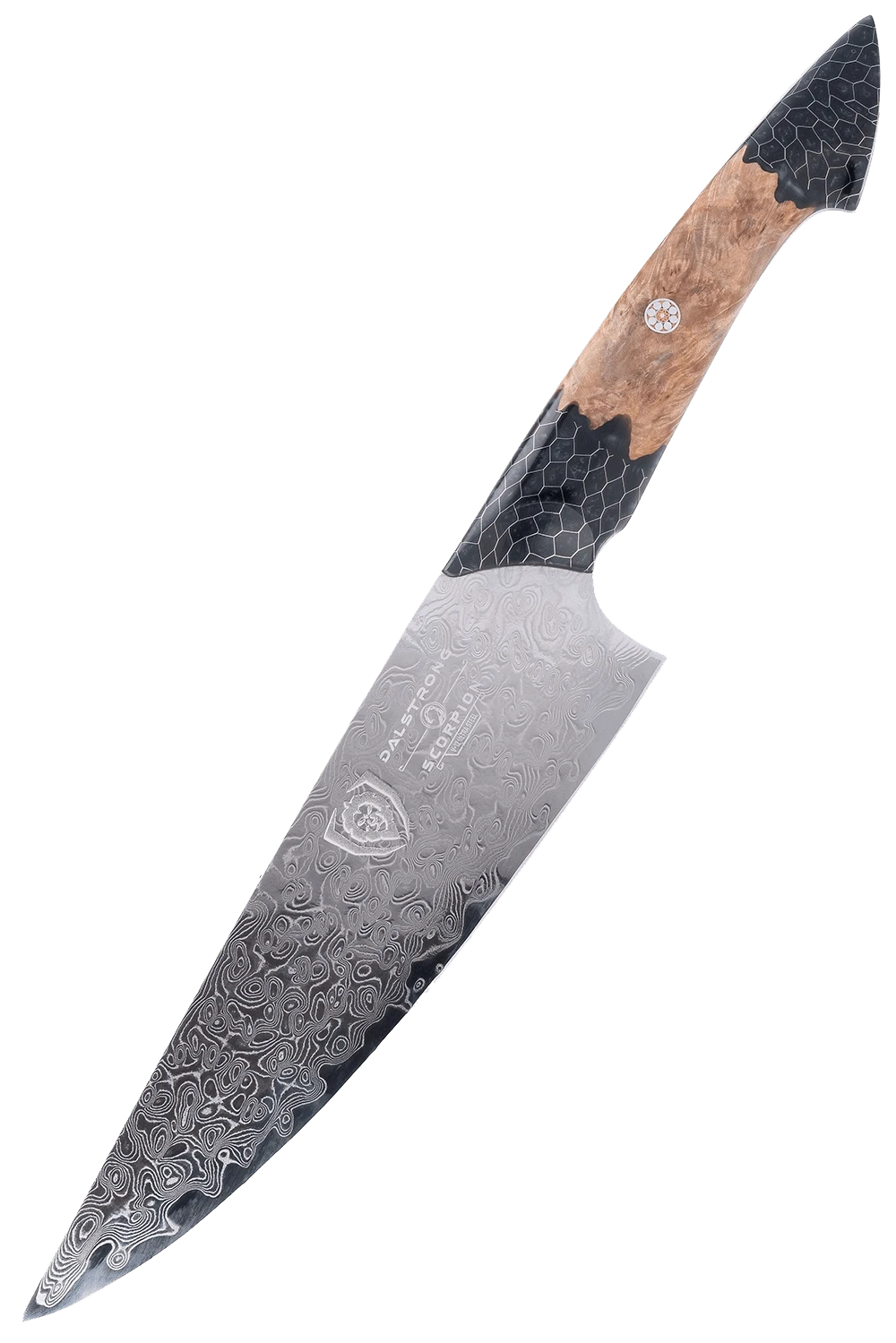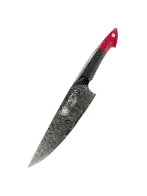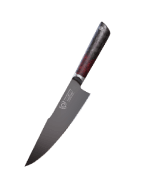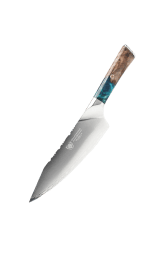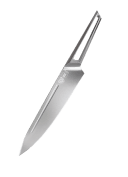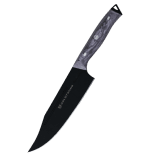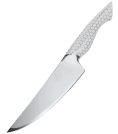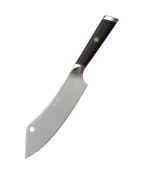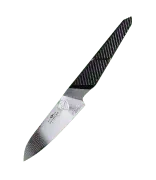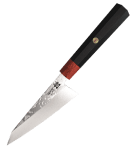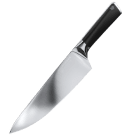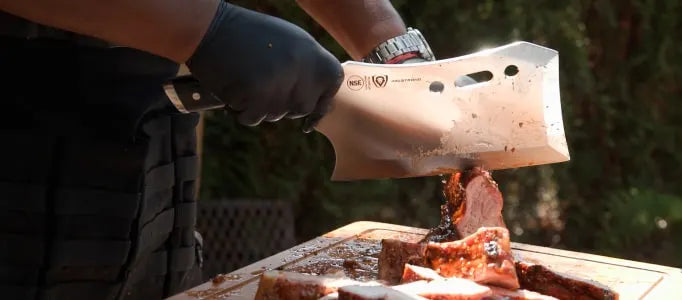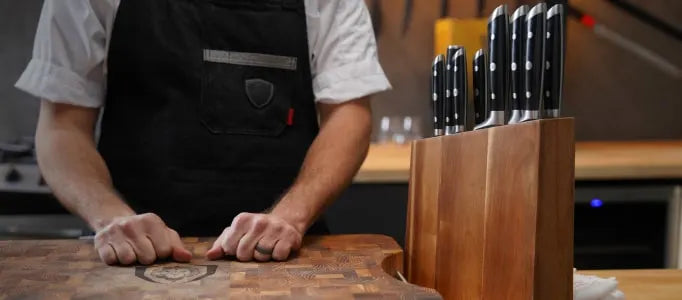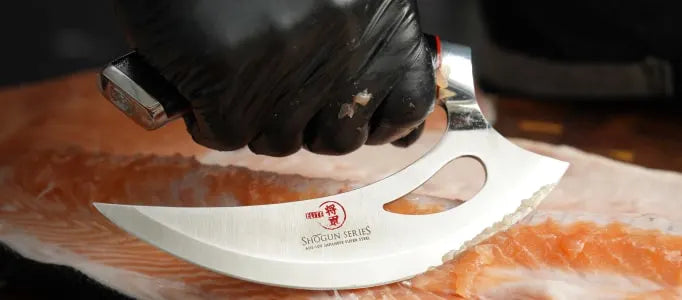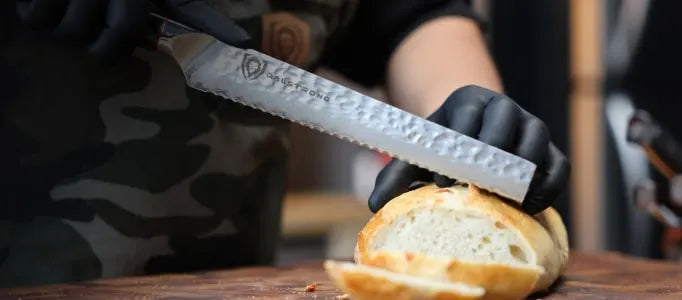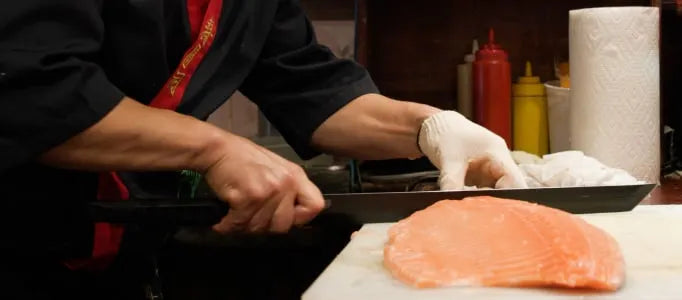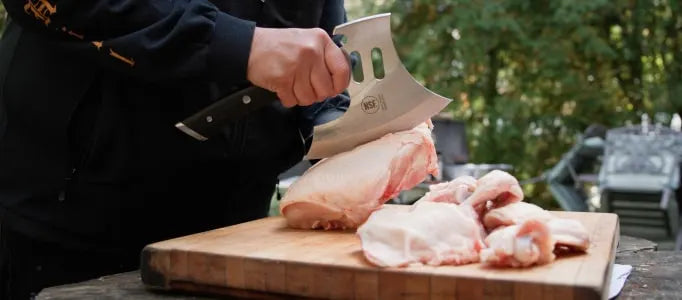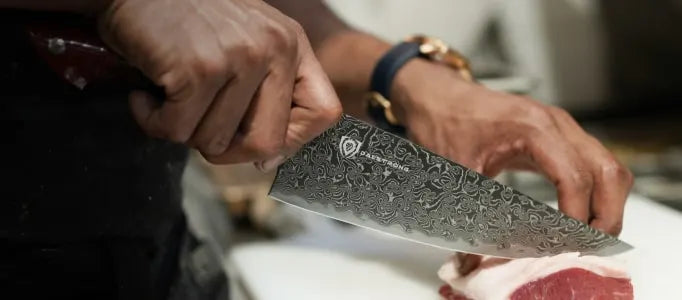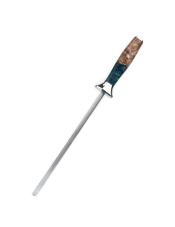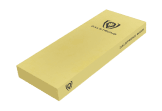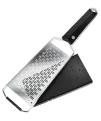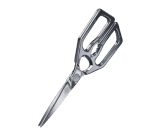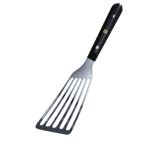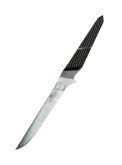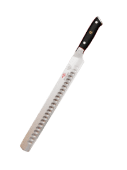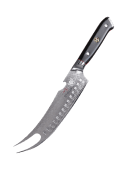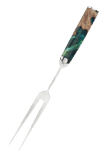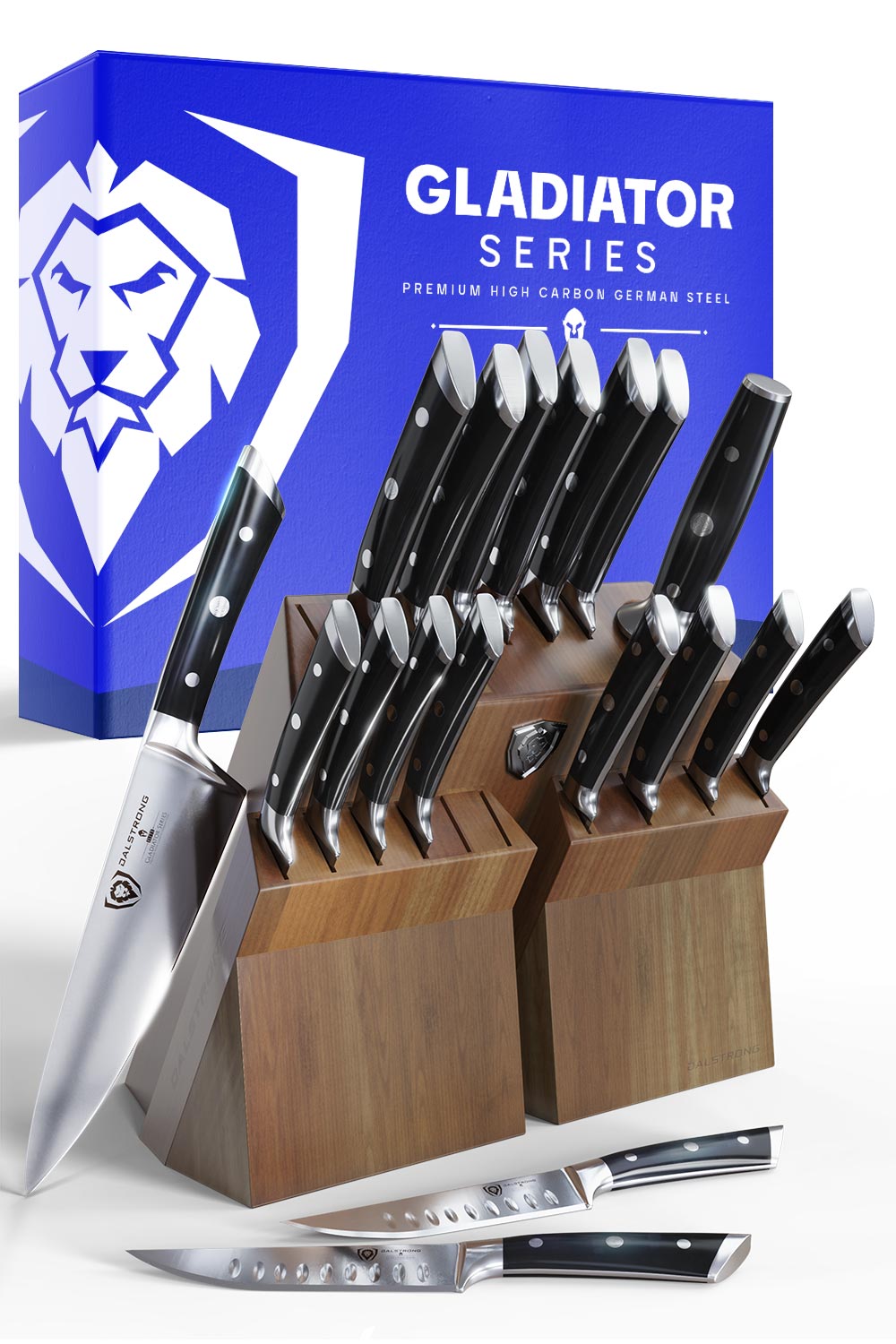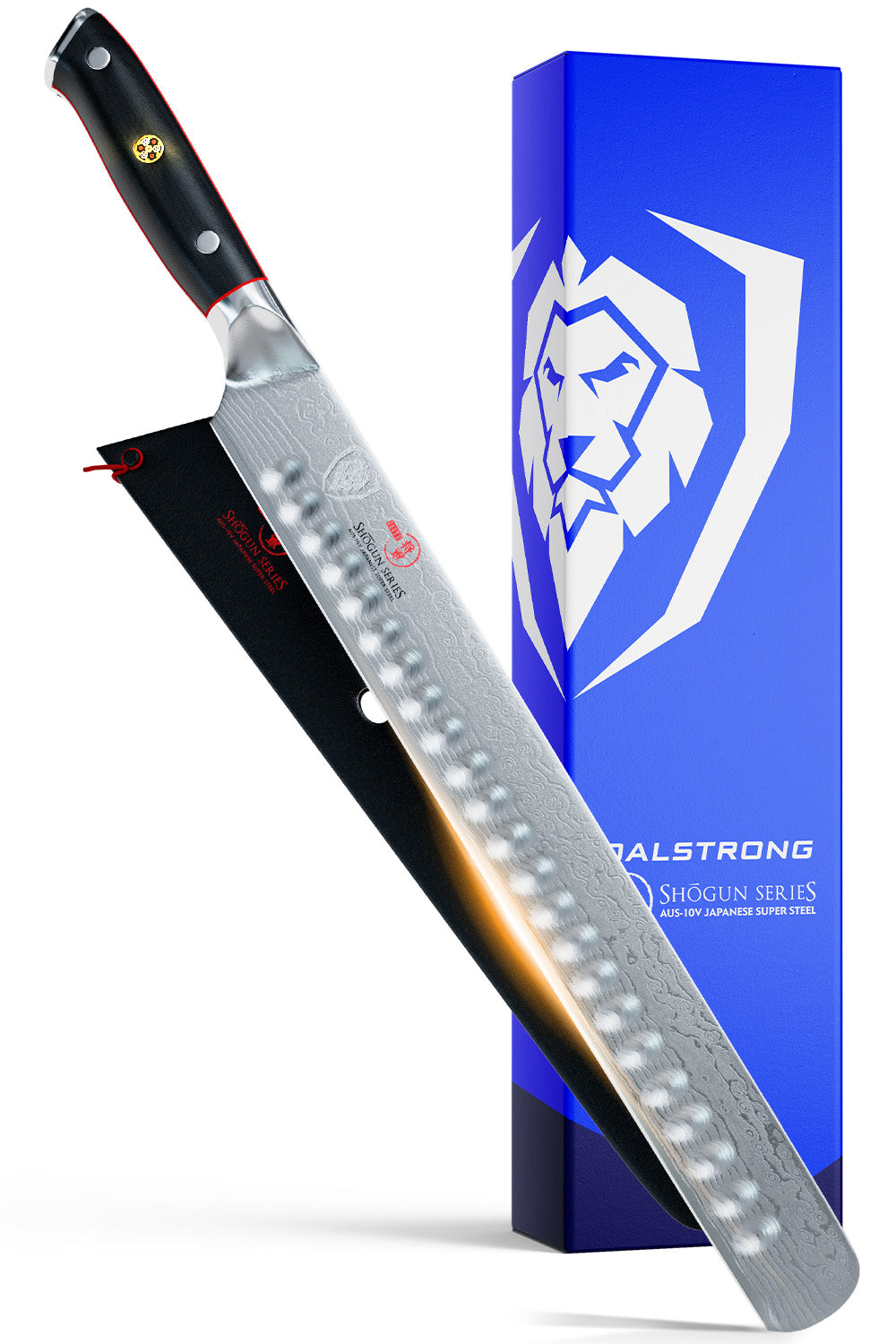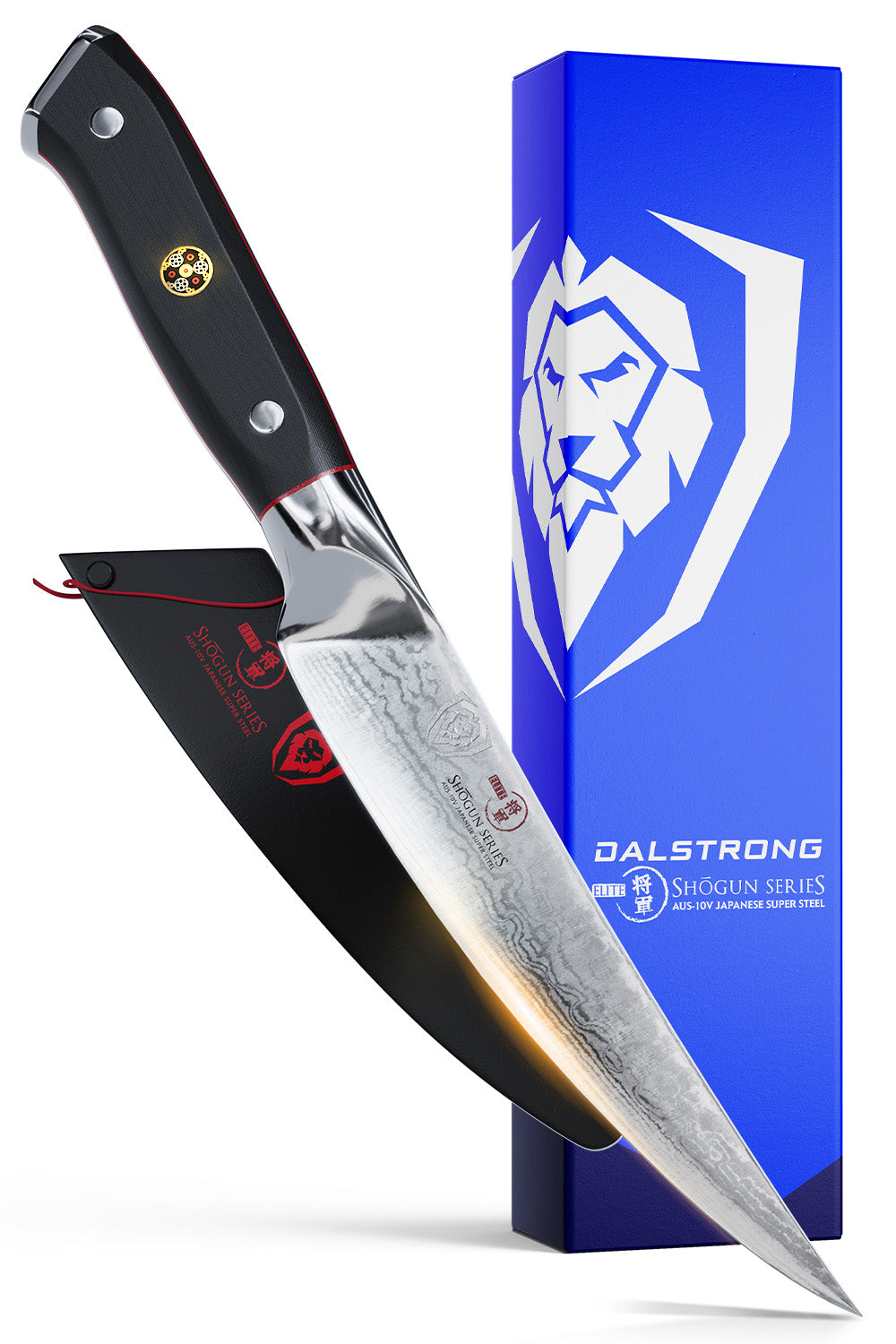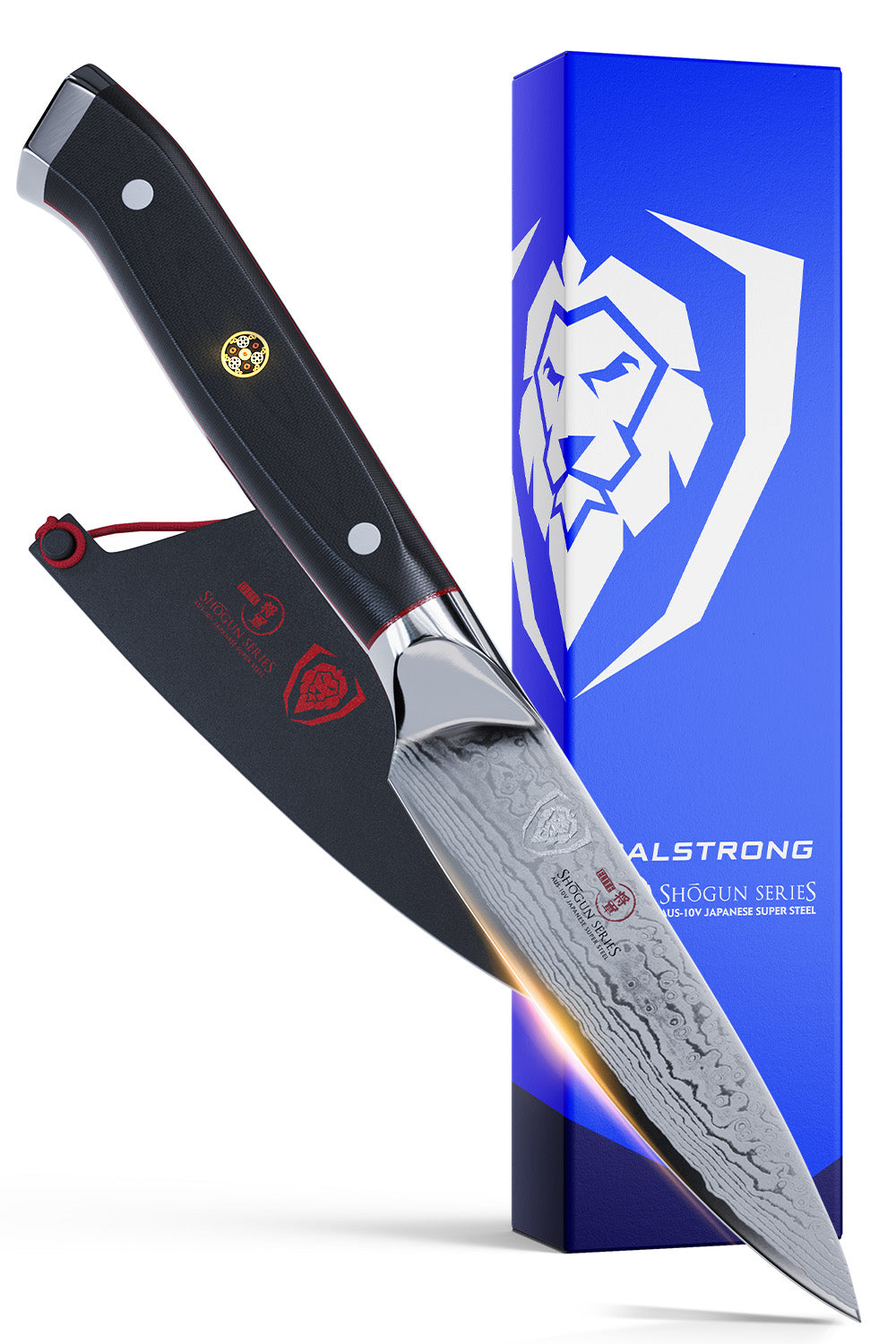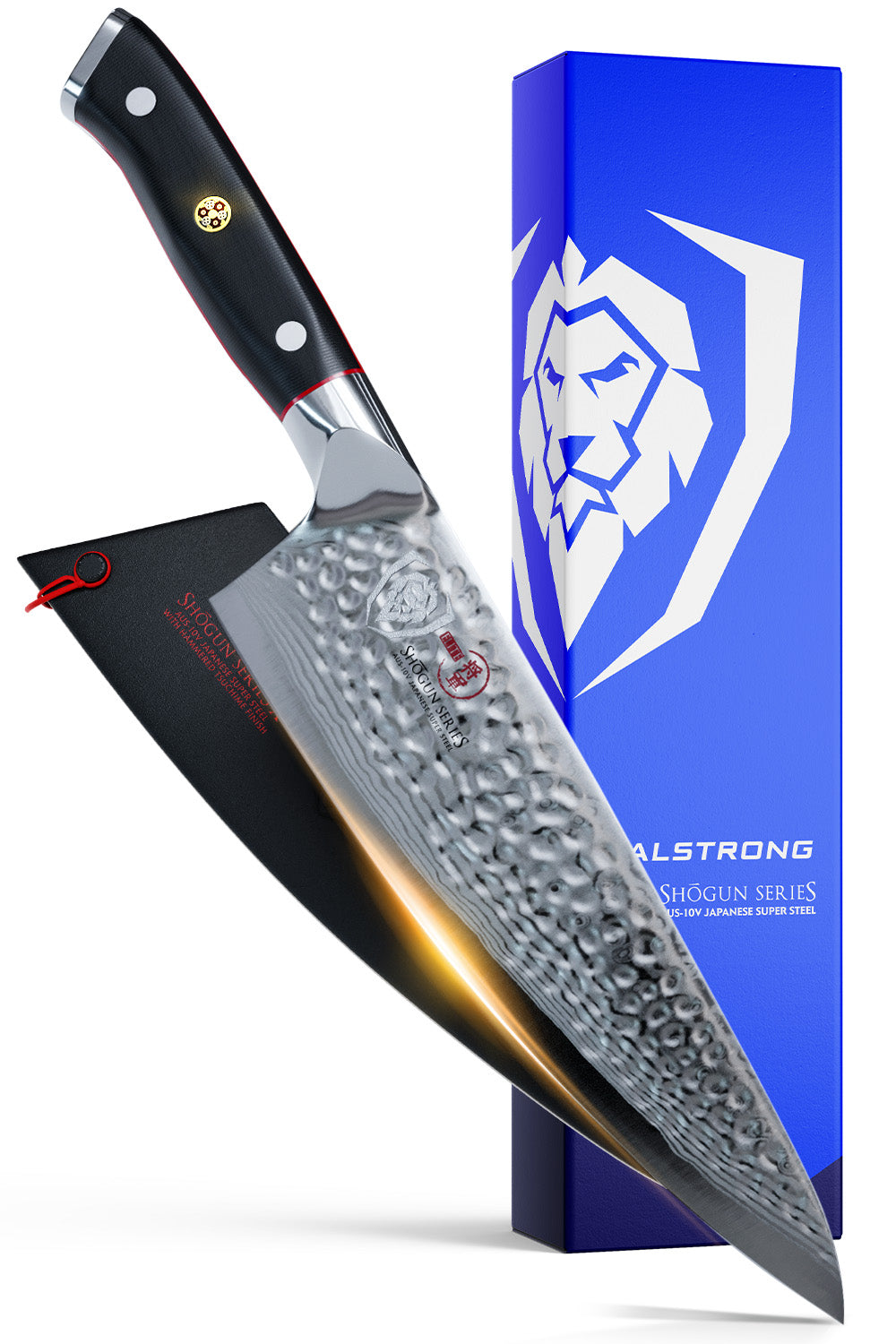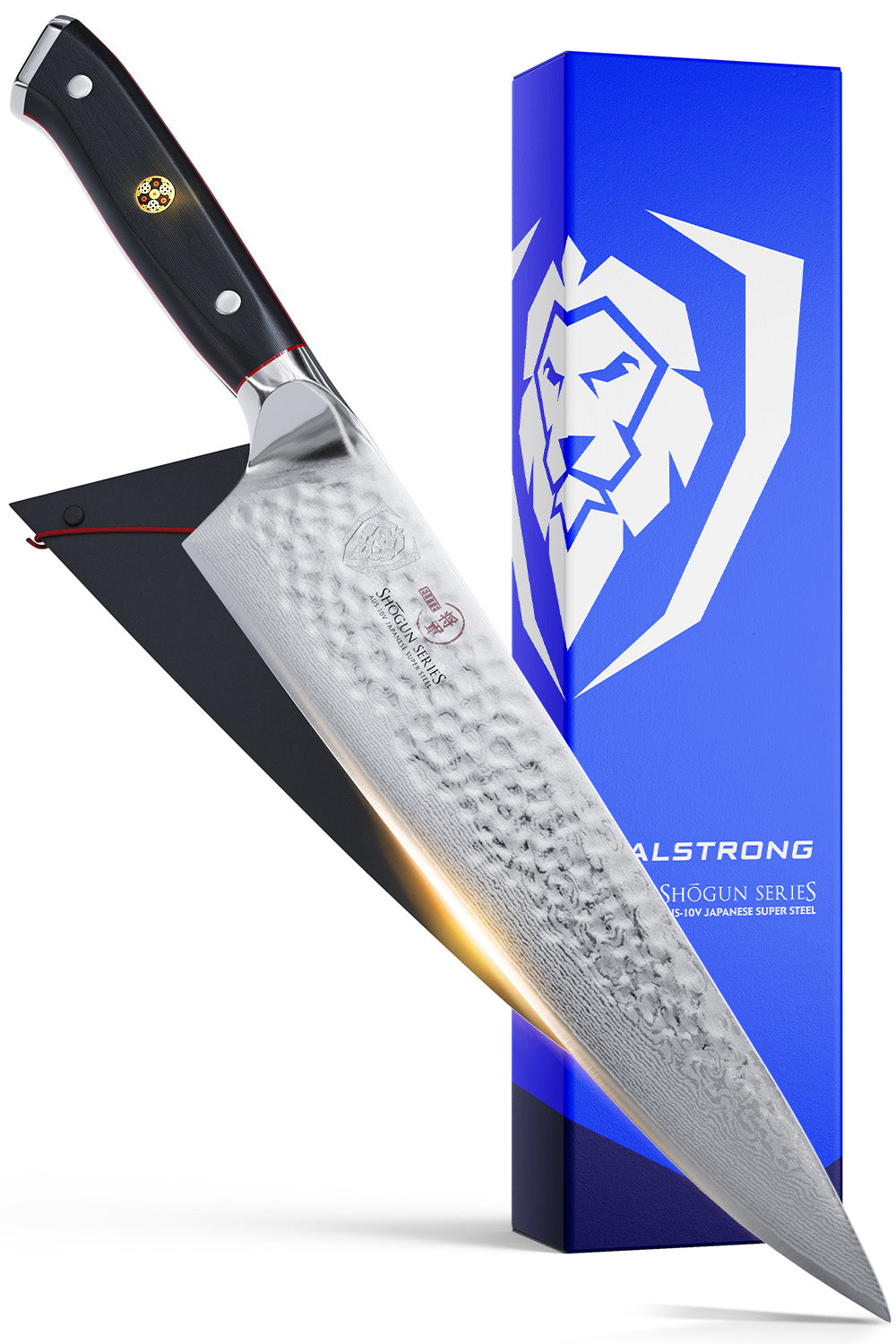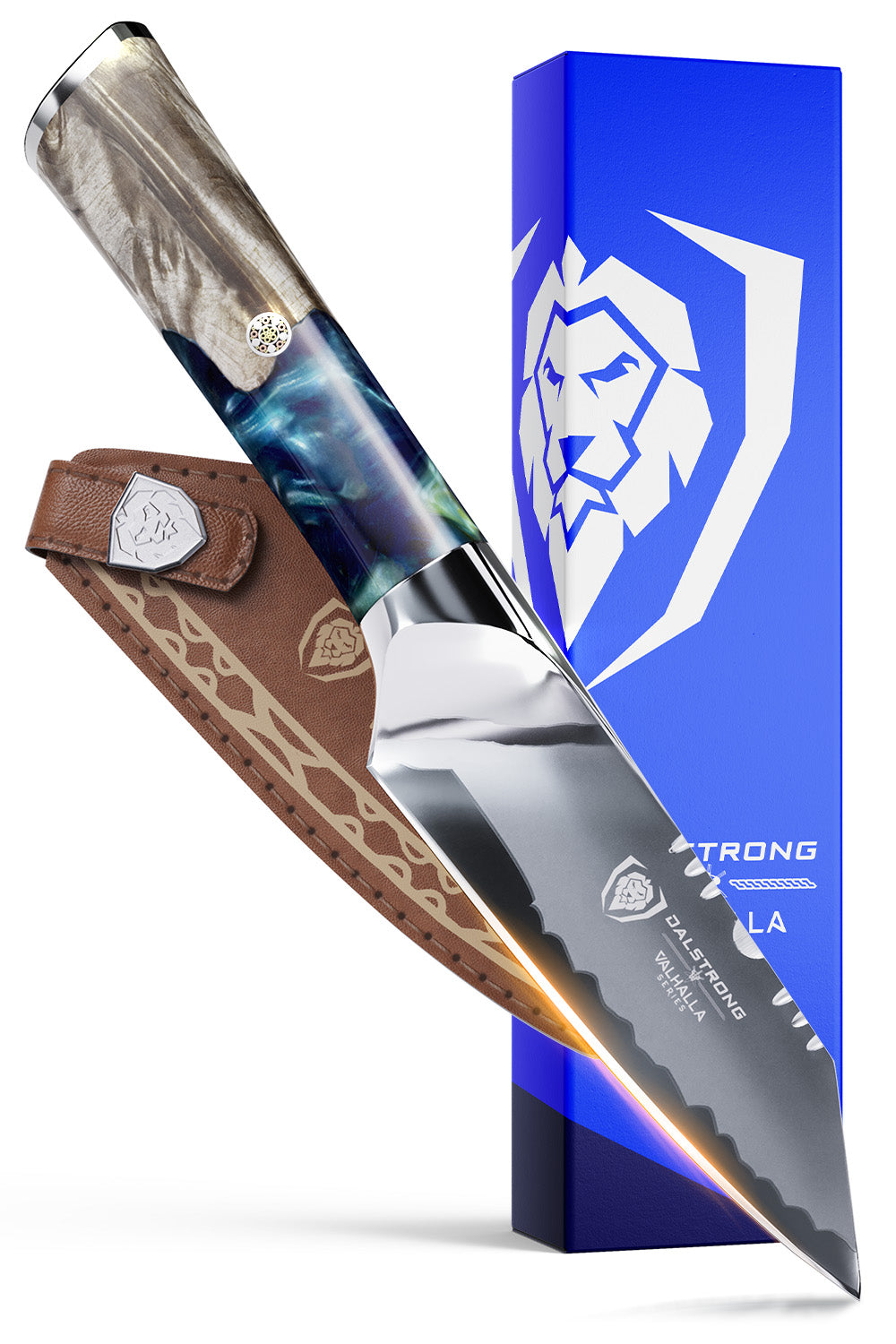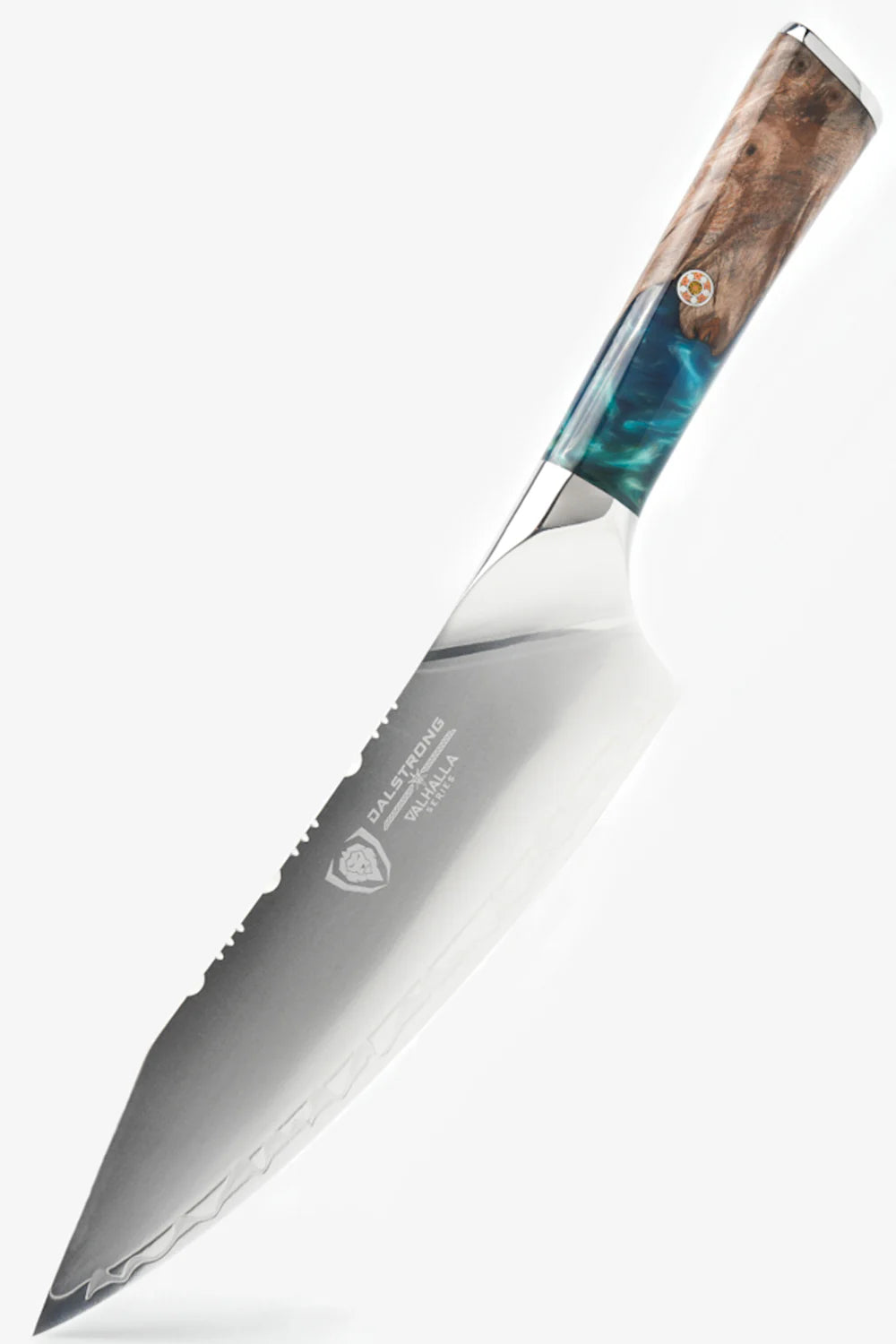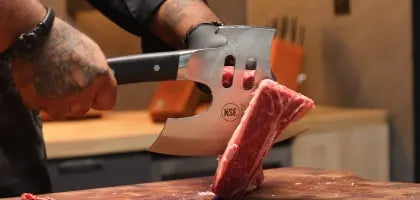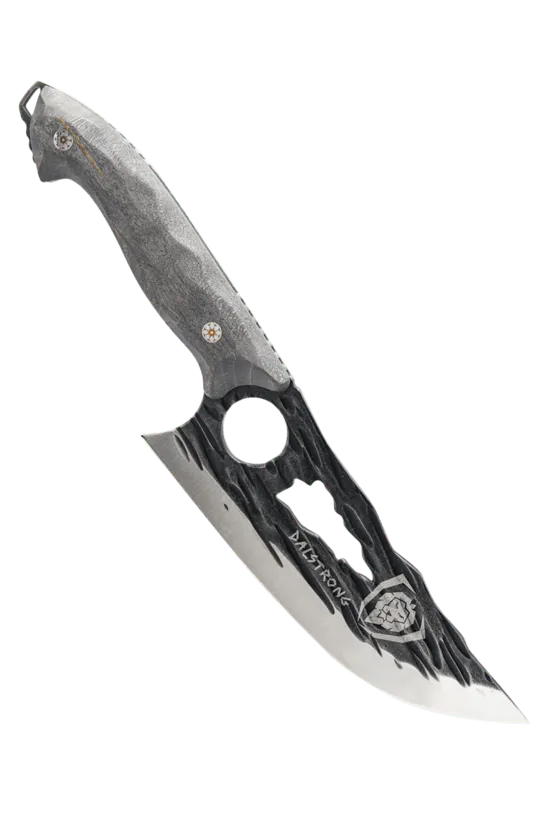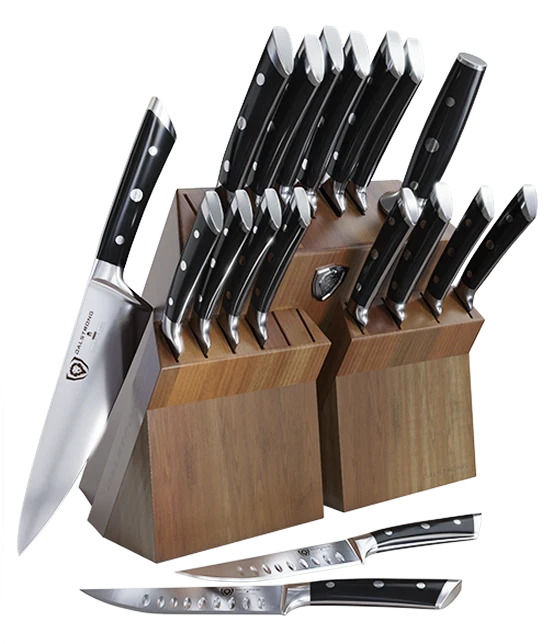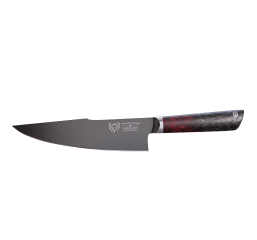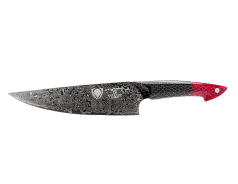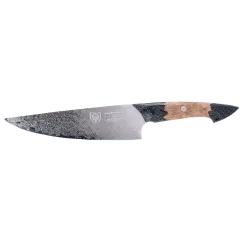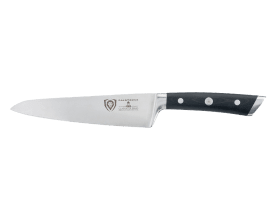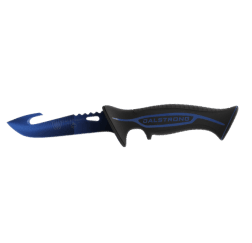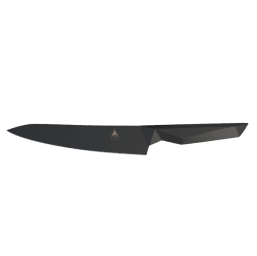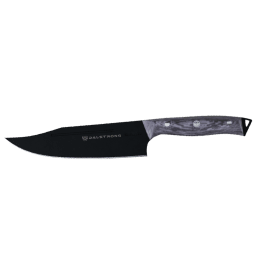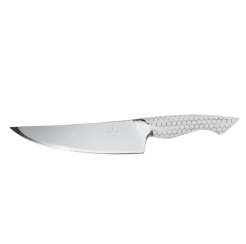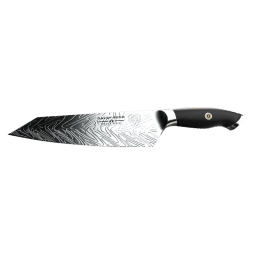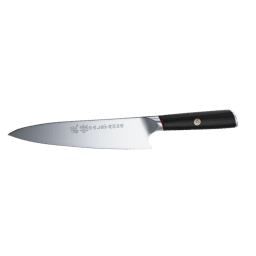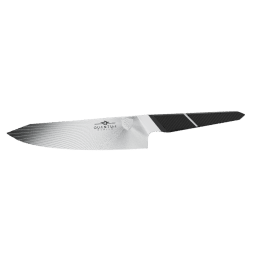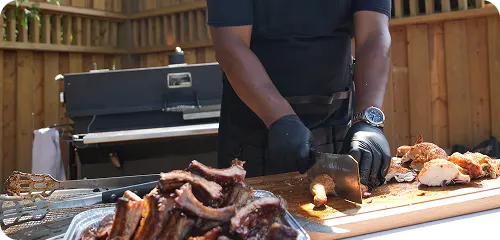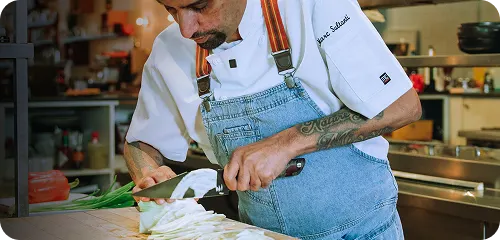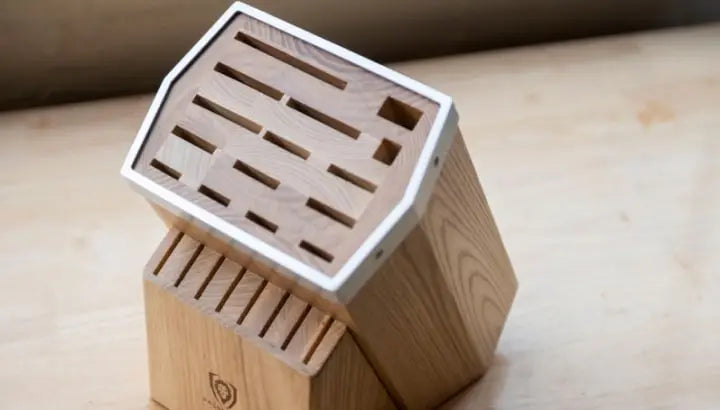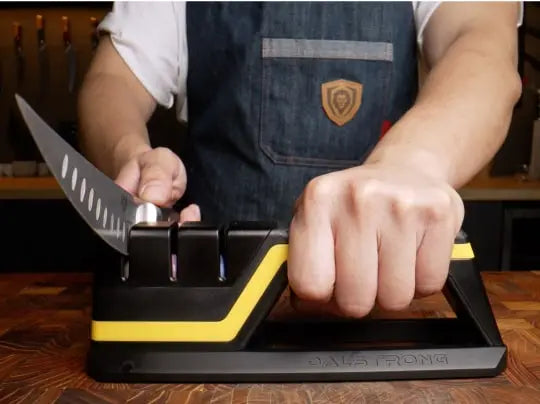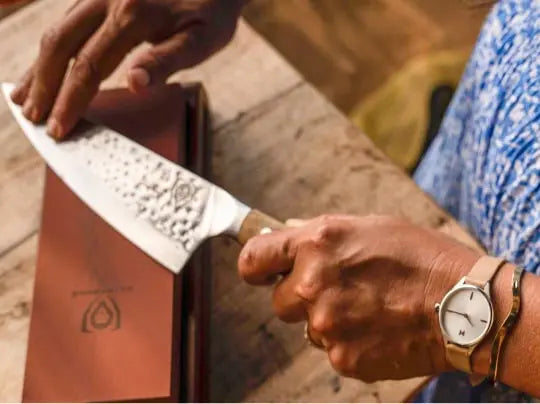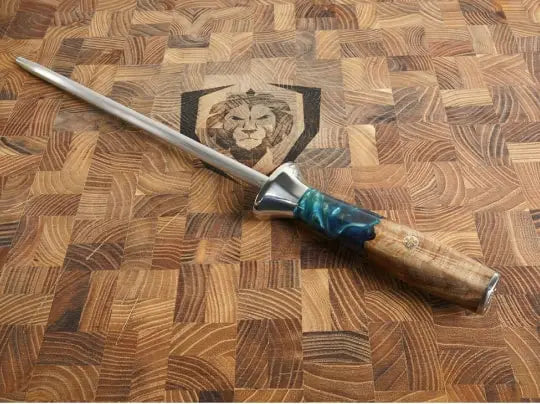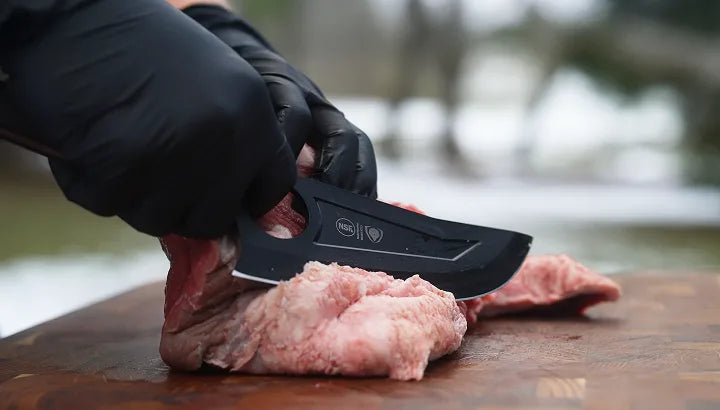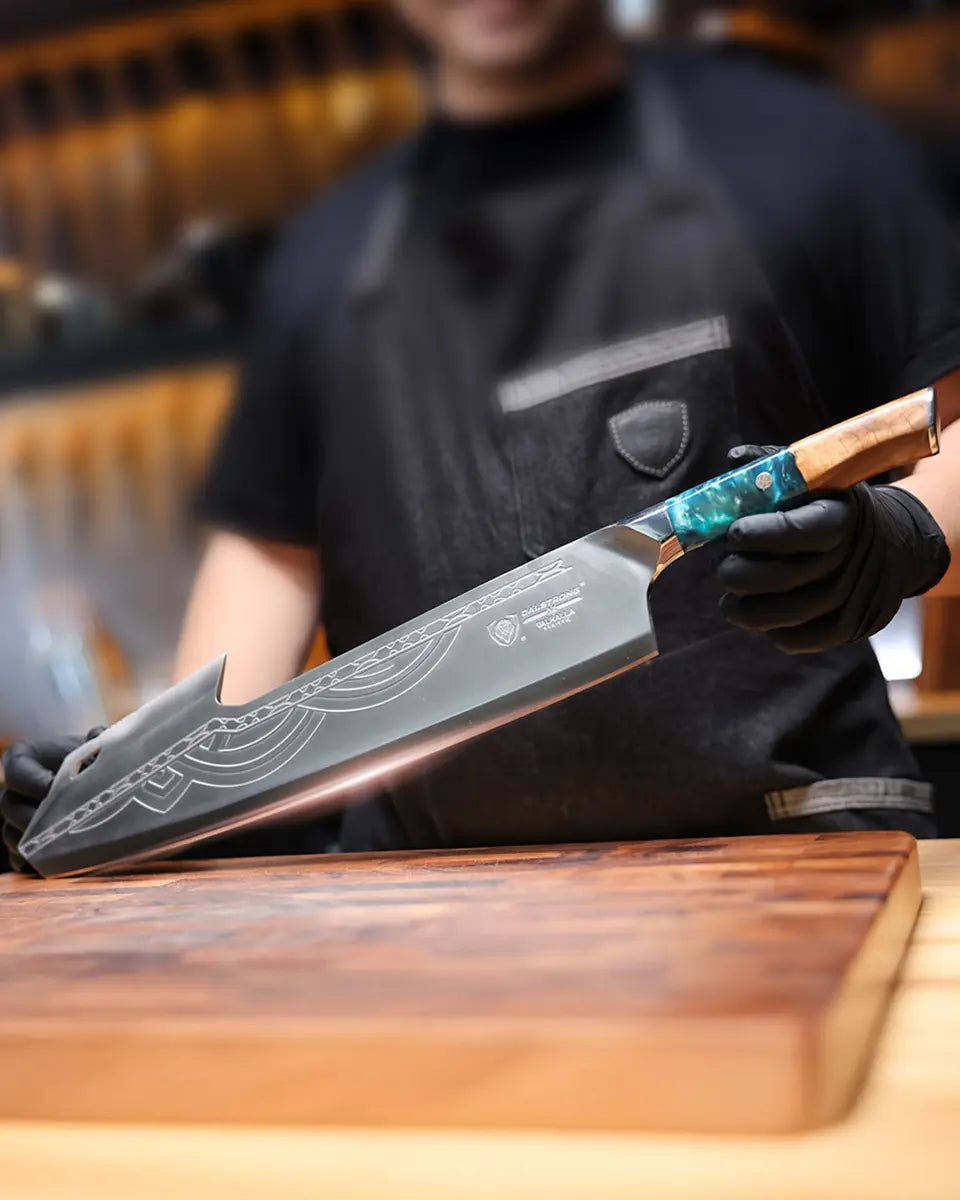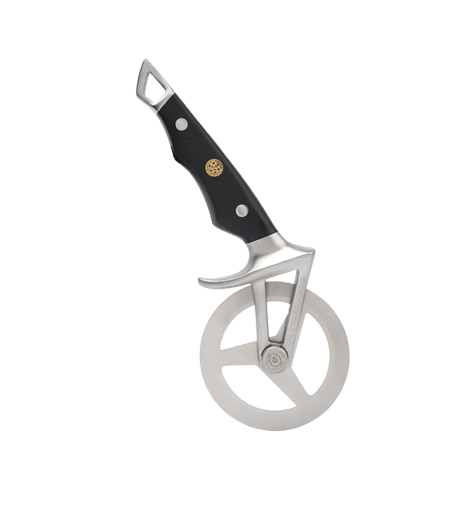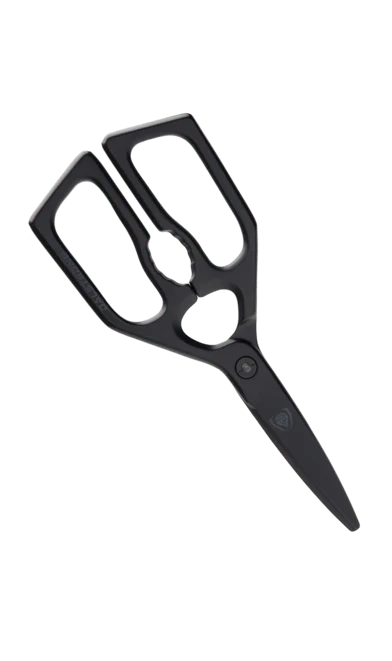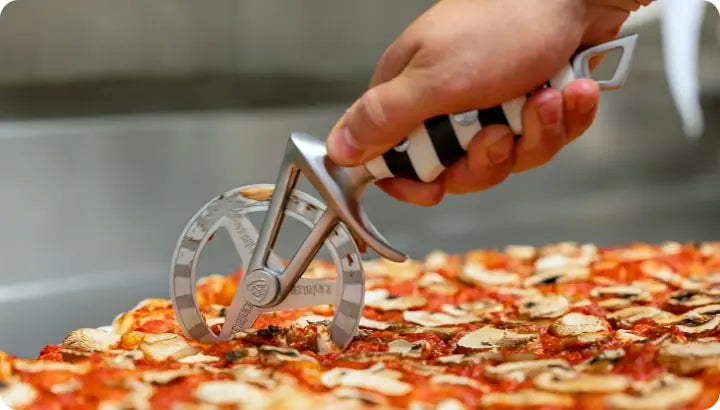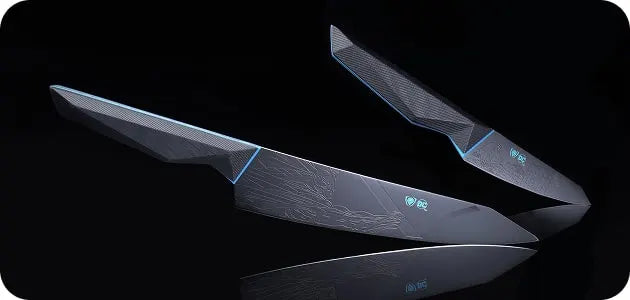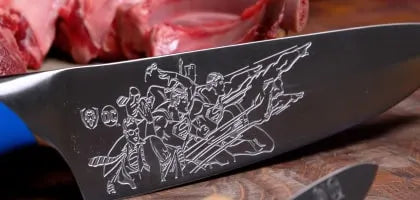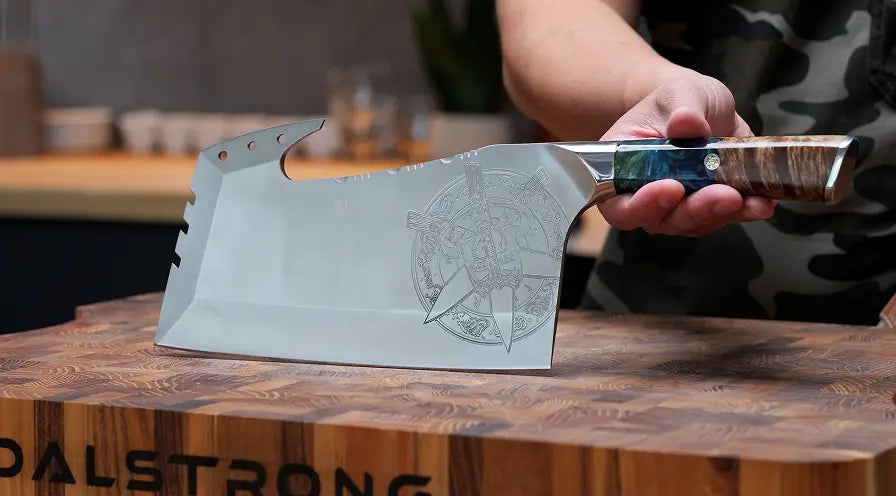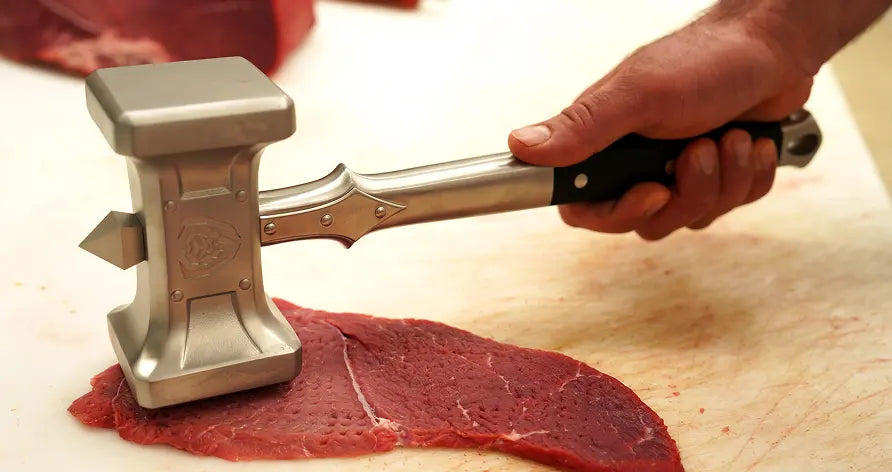 12" Frying Pan & Skillet Hammered Finish Black | Avalon Series | Dalstrong
12" Frying Pan & Skillet Hammered Finish Black | Avalon Series | Dalstrong
Quick Step Overview: Easy & Healthy Blackened Mahi Mahi Recipe
- Combine blackening spices such as smoked paprika, thyme leaves, cayenne pepper, onion powder, and garlic powder together in a bowl.
- Coat the fish with butter or olive oil to help the blackened seasoning stick to it.
- Coat the mixture on both sides.
- Place seasoned mahi mahi filet in a nonstick skillet with medium high heat.
- Cook for 2-3 minutes on each side until the fish is done.
- Sprinkle salt and black pepper on each side.
- Sprinkle lime juice on roasted cauliflower and serve with mango salsa or lime wedges.
If you’re not familiar with blackened mahimahi, you’re missing out! It is a seafood dish that can be put together in 15 minutes with cookware like a skillet, or on the grill – Perfect for a quick meal after a long day. It is made with an incredible mix of homemade cajun seasoning that gives your mahi mahi fish a crispy skin. It can be served on a bed of fluffy rice with chopped-up mango and roasted cauliflower.
 Filet Knife 6.5" Crusader Series | NSF Certified | Dalstrong
Filet Knife 6.5" Crusader Series | NSF Certified | Dalstrong
1. All About Mahi Mahi
Mahi Mahi is a white fish that is found in the Caribbean, Atlantic, and the Gulf Of Mexico. It is commonly called a flaky Hawaiian fish that is packed with vitamins and lean protein. It is a white fish with bright red veins along its body and weighs 22 kilograms on average.
Cooking a healthy mahi mahi doesn’t take much time at all, but you should do this in a ventilated kitchen or space since it uses strong seasonings for a blackened and charred effect.
In taste, mahi mahi isn’t too ‘fishy’, but it does have a rather distinctive flavor profile. Most people describe mahi mahi as a ‘sweet fish’. In terms of texture, it is quite flaky when it is fried. When cooking blackened mahi mahi, you don’t need much oil, which makes it a healthy alternative.
2. Tools Needed To Filet and Cook Blackened Mahi Mahi
1. Deba Knife
Deba Knife 6" Single Bevel | Ronin Series
A Deba knife is an excellent Japanese fish butchering knife that is used for whole fish like tuna and mahi mahi. This Deba knife from the Ronin series is designed to chop, gut, and filet fish with precision. Made with high-carbon Japanese steel, this knife has a thicker blade compared to western filet knives. The main purpose of this kitchen tool is to ensure less drag, thanks to its mirror-polished edge that is angled at a staggering 10º degrees.
Deba Knives have a blade that is flattened out from the blade to its edge. It becomes narrower towards the tip and helps perfect thin and soft cuts with little to no arm fatigue. They help remove scales and ribs of small and medium-sized fish, too.
Pros:
- It can be used as a vegetable cleaver, too.
- Helps slice and gut fish cleanly without piercing the meat.
- It is equipped with a G10 Garolite handle.
Cons:
- You may prefer a knife with a thinner blade for finer cuts to make sushi.
- It comes with a higher price tag that may be out of budget for some.
2. Skillet
12" Frying Pan & Skillet Hammered Finish Black | Avalon Series
A skillet is essential to make the best fish filet dinner recipes just like a scrumptious serving of blackened mahi mahi. Using a stainless steel skillet is best for serving fish that isn’t going to be undercooked. A skillet gives you the right amount of surface area to allow steam to flow inside the flesh without overcooking it.
This skillet from the Avalon series is the definition of function meeting form. This 12” inch frying pan and skillet hybrid responds tremendously well to temperature change and preserves the taste and texture of the fish you cook. It comes with a stainless steel lid designed to last a lifetime while locking in moisture and heat for cooking food.
Pros:
- 5-Ply Copper Forged Foundation protects the skillet from staining and warping.
- A side stainless steel handle to strengthen its grip.
Cons:
- Its functional and visual traits put this on the higher end of the price range.
- You may prefer a glass lid to see your food as it simmers instead of a stainless steel lid.
When you place your mahi mahi on the skillet, it should hiss and crackle. Within 2-3 minutes, the filet will begin to curl upwards. This is when you should use a thin, metal-slotted spatula to press down the filet. Once the filet makes contact with the pan, it won’t resist the meat anymore and you can continue cooking your mahi mahi.
3. Breaking Knife
Butcher's Breaking Cimiter Knife 10"Gladiator Series
This breaking and boning knife helps you pierce through the flesh of the mahi mahi neatly and gut or filet it seamlessly. The curved tip helps in separating the bone from the spine, too. The curved blade is made with high-carbon ThyssenKrupp steel and helps you contour and de-bone quite neatly compared to a standard knife. Remember to never use a knife with serrations along the blade, as it will tear through the skin of your mahi mahi or any other fish that you’re cooking, such as salmon.
Pros:
- Perfect to tear through large fish, thanks to its curved blade.
- Hardened at 56+ Rockwell.
Cons:
- The blade may seem intimidating to the novice.
- It could be slightly outside your budget.
4. Filet Knife
A filet knife is designed to work with medium to large fish like tuna or mahi mahi. Essentially, this filet knife has a sharp and narrow tip with 2.0 mm thickness at the spine to work through a medium-sized fish like mahi mahi. Use this knife from the Shogun series to filet your fish and preserve it for a later time as well.
Pros:
- A best-seller that has the right amount of thickness to filet fish.
- It is made with high-carbon Japanese steel for resilience and durability.
Cons:
- You may prefer a stainless steel handle for your filet knife compared to a wooden one.
- If you work with large fish all the time, you may want a longer blade.
5. Cooking Tweezers
High-Precision Black Titanium Coated 12" Professional Tweezers
I can’t recommend cooking tweezers enough. They are perfect for a fish like mahi mahi that has large, but clear-looking bones that can be daunting to remove when the fish is raw. These professional cooking tweezers have high precision so you can pull out the finest of bones from the fish before, as well as after cooking it. It has a non-reflective, titanium nitride coating for all the durability that you need.
Pros:
- Extremely convenient to use at a comfortable price.
- Made with high-carbon stainless steel and is corrosion-resistant.
Cons:
- You may be on the lookout for shorter tweezers for smaller filets.
- If you want to flip and turn large meats, this tweezer may be a little small.
6. Cutting Board
Corner Cutting Board - Teak Wood Dalstrong

A sturdy and functional cutting board can make all the difference. Using a cutting board that is made with high-quality wood is crucial. This cutting board is made with premium-grade Teak Wood and is perfect to hold, slice, and de-bone fish like mahi mahi and salmon. Remember to have an apron on you for when it gets slimy!
Pros:
- Slip-resistant surface.
- Sturdy enough to support heavy cutting and slicing.
Cons:
- This cutting board is not intended for hot surfaces as it is made with Teak Wood.
- Needs to be patted dry after washing or the soapy mixture will damage its natural oils.
7. Slotted Spatula
Professional Slotted Fish Spatula 7.5" Dalstrong
Made with military-grade G10 fiberglass resin, the handle on this slotted fish spatula helps get rid of excessive oil and some fat that comes out from the mahi mahi when it is being cooked. Thanks to its superior hand control, it is perfect for delicate foods like salmon and helps you navigate food in a pan full of meat and veggies, as well. If you need to remove certain foods when the stove is on high heat, a slotted spatula can help you do that by not distorting their texture and shape.
Pros:
- Made with corrosion-resistant stainless steel.
- Angled front-edge and large head size.
Cons:
- If you work at the grill often, you may prefer a longer handle to maneuver.
- You could be on the lookout for a silicone spatula.
3. The Perfect Temperature To Cook Mahi Mahi
When you place a filet of seasoned fish on the stove, oven, or grill, especially for a portion of blackened mahi mahi, getting the temperature right is essential. The tenderness of your mahi mahi will depend on two factors – The skillet being used, and the temperature it is being cooked at.
Cooking Mahi Mahi In The Oven
Since mahi mahi is a ‘flaky’ fish, you don’t want to overcook it. The correct temperature to cook mahi mahi is 137º degrees F, or 58º degrees C. But, this depends on the size of the filet, so if you’re cooking mahi mahi for the first time, it is better to cook it at 130º F - 135º F. If you’re making blackened mahi mahi, you don’t want to cook the fish on high heat. The mahi mahi is cooked if the internal temperature reaches 145º F.
Cooking Mahi Mahi On The Stove or Grill
Once you place your mahi mahi filet on the stove or grill, cook each side for about 3 minutes before flipping it. Once you’ve cooked both sides for 5 minutes collectively, use a digital meat thermometer to check the temperature. Once the resting temperature reaches 145º F, turn the heat down immediately.
Cover the grill or skillet with a lid for 2 minutes and let the fish steam evenly. Check the temperature once again. When the fish is close to getting done, the temperature should be anywhere between 137º F and 145º F. Rest the fish for 8-10 minutes. Then, your blackened fish is ready to be served.
4. How To Make Blackened Mahi Mahi Seasoning
Here’s a recipe to make the best blackened mahi mahi seasoning with spices that are easy to find. Remember, if you’re on the go and need a quick fix, you can always use store bought blackened seasoning that is made for the main dish – Blackened mahi mahi fish or Blackened mahi mahi tacos.
However, if you want a home-made mix of spices to make the best blackened mahi mahi recipe, here’s what you would need:
Ingredients for recipe:
- Mahi Mahi Fish
- Cayenne Pepper
- Garlic Powder
- Onion Powder
- 1 cup melted butter, avocado oil, or extra virgin olive oil (you could also use softened butter).
- Smoked paprika
- Black Pepper
- Salt
- Red onion
- Mango (Optional, for salsa)
- Chili powder
Steps:
- To make the perfect blackened fish, mix all your dry ingredients together, including salt and pepper.
- If you like a little heat or flavor, add an extra pinch of cayenne pepper, onion powder, and garlic powder.
- Pat dry your mahi mahi with a paper towel and keep it aside.
- Whip out your chef’s knife and slice one red onion and half one whole mango into little chunks
- In a separate bowl, add your chopped red onion, mango, and an extra pinch of spices like black pepper, salt, and cayenne pepper.
That is the easiest recipe out there to make the blackened seasoning for mahi mahi.
Tips:
- If you’re cooking 12 filets of blackened fish, add 12 teaspoons of salt and pepper.
- Saute your onion in extra virgin olive oil, avocado oil, or butter to enhance the flavor of your mango salsa.
5. How To Nail The Perfect Blackened Mahi Mahi Recipe
Now that you have the ultimate blackened seasoning ready to make the ultimate mahi mahi recipe, let’s get right into it. Remember, using a little extra blackened seasoning for your fish is not going to overpower it. The only way to nail this recipe is by adding a couple of extra teaspoons of seasoning. The flakiness of this fish will balance it out perfectly.
Steps:
- Melt some clarified butter in a cup and set aside. Using the clarified kind of butter is better than the standard, as it enriches the umami flavor profile of this dish. (That already sounds so delicious, I’m sorry.)
- Bring out the blackened seasoning and add mahi mahi into the mix of spices.
- Pour a tablespoon of butter into the mixture and pat it on the fish so the spices can firmly stick to it. Remember to season both sides well!
- Heat up your skillet or turn a stove on medium heat. If you’re using a grill, let the temperature reach 450º F before you place your filets on it.
- Once the butter is nice and hot, place the mahi mahi on the skillet and cook for 3 minutes on each side.
- Cook for 4-5 minutes on each side if you’re using the grill.
- Once your mahi mahi is cooked, use a meat thermometer to check the internal temperature.
- If the temperature reaches 145ºF, your fish is cooked and ready to be served along with a mango and red onion salsa.
Tip:
- Add the remaining seasoning to one tablespoon of melted butter, and use it as a marinade for another time, or if your mahi mahi gets slightly dry or rubbery.
- Frozen mahi mahi doesn’t alter the taste at all, and will taste the same as fresh fish, so feel free to keep a mix of blackened seasoning handy.
6. How To Make Mahi Mahi Fish Tacos
Mahi Mahi tacos are all about getting the seasonings right! Here’s the ultimate mahi mahi tacos recipe:
Ingredients for recipe:
- Chili powder
- Cumin
- Smoked paprika
- Onion powder
- Garlic Powder
- Cayenne Pepper
- Pre-made blackened seasoning
Steps:
- Follow the same recipe for making mahi mahi. Using a skillet is perfect for tacos because they keep the fish moist and juicy.
- Once your fish is ready, seasoning is key. In a bowl, add extra virgin olive oil or avocado oil and add the remaining blackened seasoning mix for that can act as an extra burst of flavor or even a dip.
- Place warmed tortillas on a clean cutting board (corn or flour, it is your choice entirely) then, and add a layer of the blackened seasoning mixed with oil.
Your mahi mahi tacos are ready to be served. Easy recipe, right?
7. Nutritional Information Of Mahi Mahi
Mahi Mahi is low in calories and has a range of health benefits. It contains a high amount of vitamins, proteins, and minerals. Generally, each serving of mahi mahi contains 134 calories. If you pair this with a side of roasted cauliflower, it makes a hearty meal.
This white fish contains Vitamin B5 and B6 that help support metabolism and the healthy functioning of the cells in your body.
Vitamin B6 is particularly beneficial for the brain as it helps produce healthy hormones, ultimately helping your mood. The potassium content in this fish helps build and strengthen your body’s immune system and fight diseases.
Not only is it a lean protein, it is significantly low in calories, which is why it makes the perfect quick meal that is healthy, too. The Iron content in mahi mahi produces healthy red blood cells. Vitamin B generally promotes a smooth and healthy brain function while keeping cardiovascular diseases at bay.
8. Frequently Asked Questions
What fish is best for blackening?
Mahi Mahi fish is great for blackening, thanks to its thick texture that holds onto blackened seasoning well.
What is meant by blackened fish?
Blackened fish is a delicacy that is particularly enjoyed in Hawaii, as this white fish is a common catch there. Blackening fish means mixing a handful of spices like cumin, cayenne pepper, onion powder, black pepper, salt, garlic powder, and smoked paprika to apply to the skin of your fish.
Is blackening fish healthy?
Mahi Mahi fish is best for blackening as it has bountiful health benefits, such as promoting healthy brain and heart function. The spices used to blacken your fish are great to strengthen your immune system too.
What should mahi mahi be cooked to?
Mahi Mahi should be cooked at 137º degrees F in the oven and on the stove. It should be cooked at 450º F on the grill. The resting temperature of a well-cooked mahi mahi is between 135º F to 145º F.



